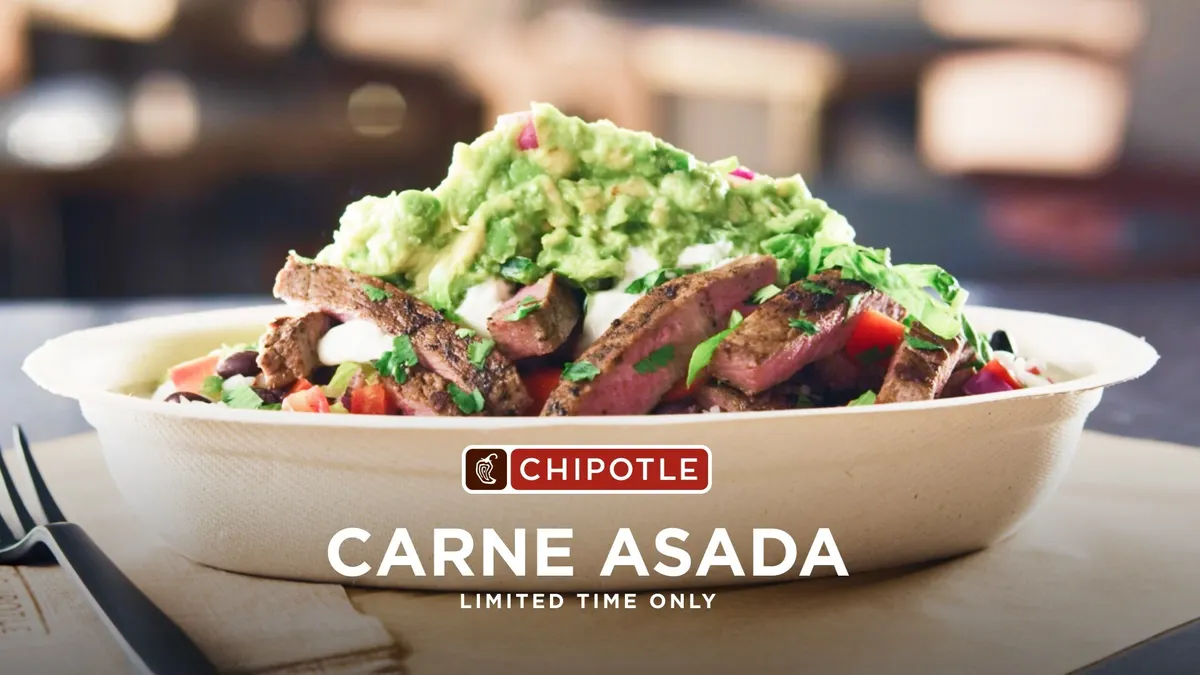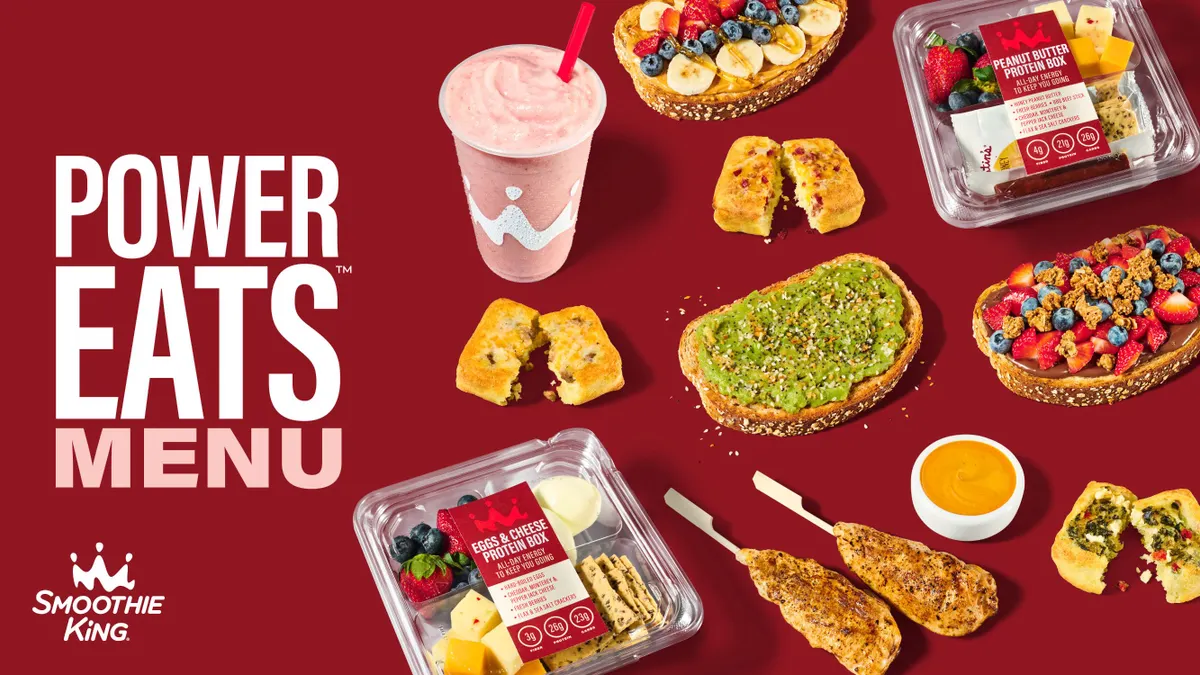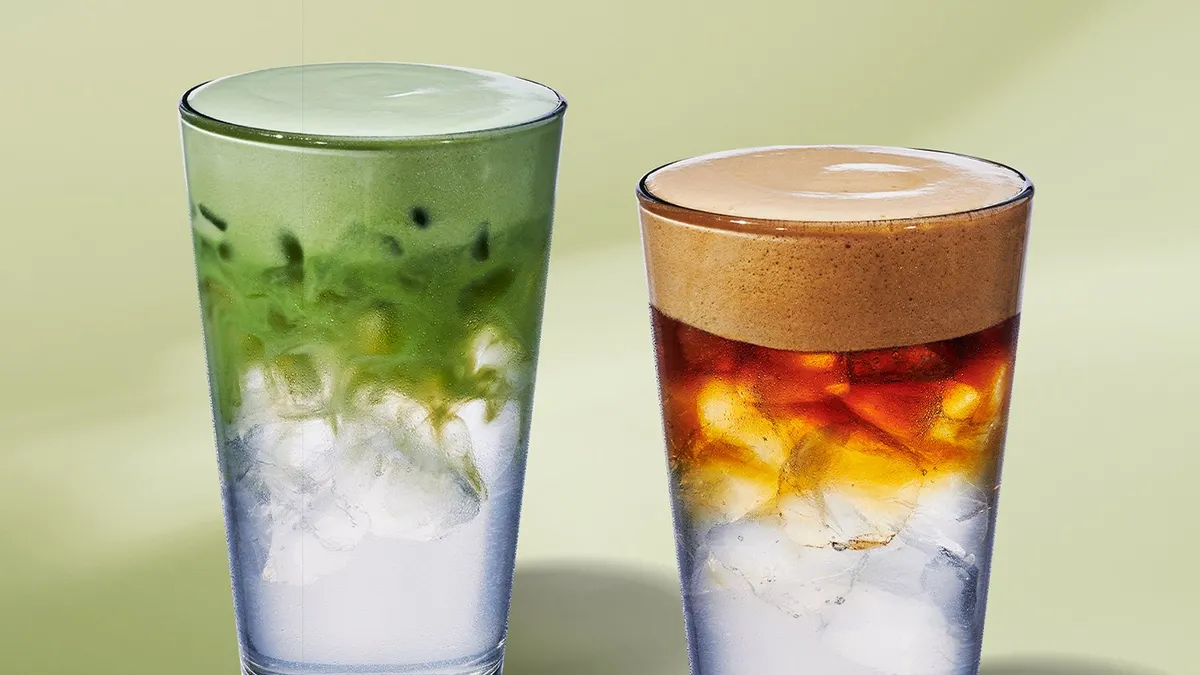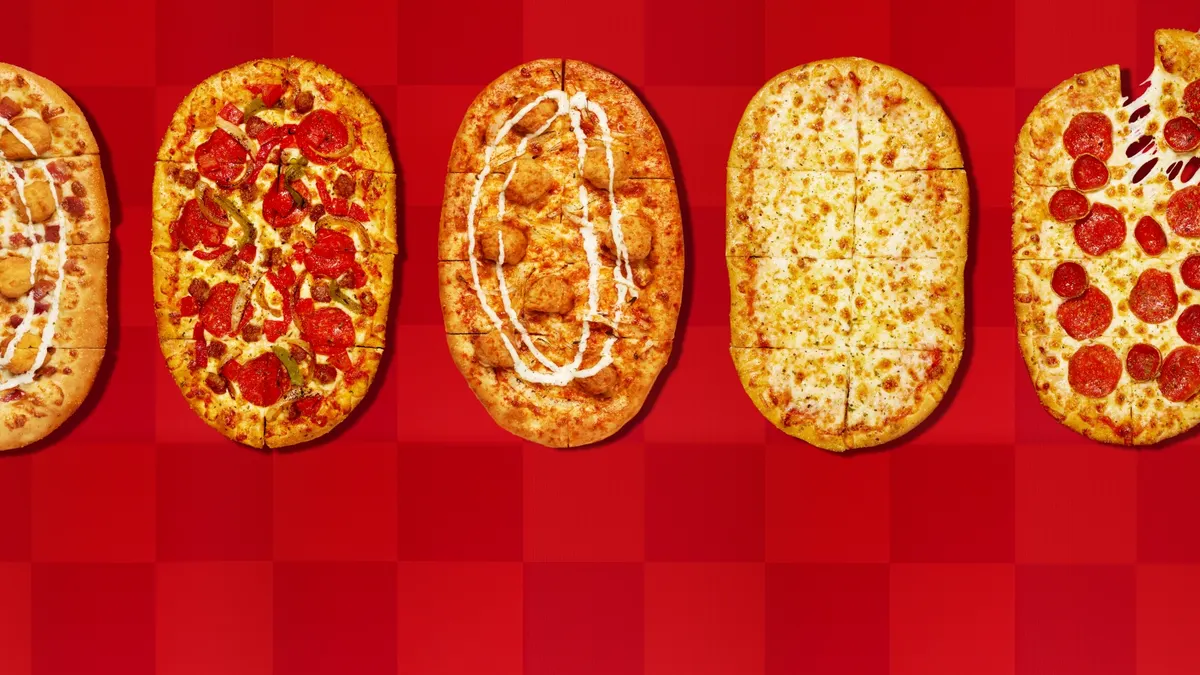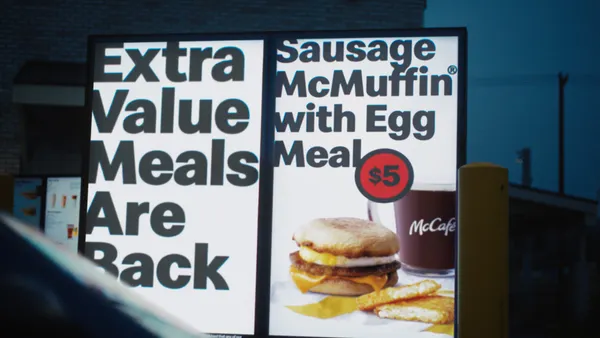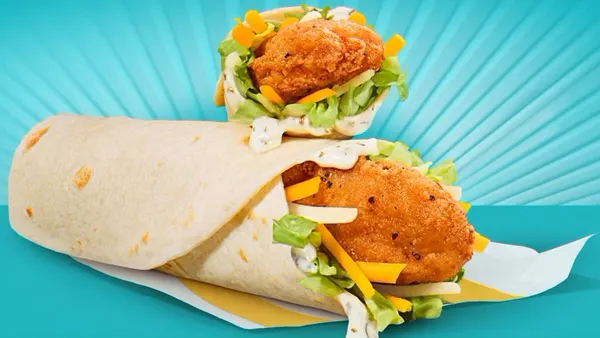Moe’s Southwest Grill is in the midst of a menu overhaul following tests at 80-plus restaurants to identify opportunities for experimentation with more premium ingredients. The TexMex chain will roll out new burritos, proteins and sauces across its system by the end of the year, and has removed slow-moving products — like shredded pork — to free up space and time, said Chief Brand Officer Tory Bartlett.
This focus on ingredients is part of Moe’s larger Project Victory initiative, which is designed to improve store design, packaging and branding in addition to food offerings. The company aims to make operational improvements that can foster better quality and creativity, such as smaller-footprint, higher-efficiency ovens that will be rolled out chainwide by 2025.
These goals coincide with an industrywide push to innovate menus while managing food costs — a tall order when some diners may still be price sensitive in an inflationary environment. But Moe’s has freed up space for new items with simple changes — such as combining grilled onions and peppers as one fajita mix — and is optimizing labor to offer more in-house ingredient prep, Bartlett said.
Bartlett spoke with Restaurant Dive about Moe’s menu goals and how the chain hopes to change operations and expand across the U.S. in the coming years.
This interview has been edited for clarity and brevity.
RESTAURANT DIVE: How has Project Victory impacted menu innovation? Has it been difficult to optimize items while balancing costs?
TORY BARTLETT: As part of Project Victory, we wanted to validate the ingredients. A great example of this is that we've had shredded pork products for quite a long time. It represented less than 2% of our total sales. It was a great product, but overall, it just really wasn't moving. If you have a product like that, there’s risk that it could sit there and get messed up if the team member doesn't discard it or handle it the right way, and you end up serving an inferior product.
So we made the decision — we tested it with 87 locations — to remove it. We didn't remove it just because it was a slow mover, but also so we could innovate and grow. There's only so much space you have on those hot and cold lines. One of the things that we've seen is that you can't just condense a quarter-sized pan into a one-sixth-sized pan because it creates more complex operations. We knew we had to remove some ingredients to move forward. We removed cucumbers and pork. We changed our corn from a cold side to a hot side. We used to have grilled onions and peppers separate, but we've combined that to be kind of a fajita mix. That freed up four spots for us.
What are you experimenting with?
We are testing some really great unique proteins. One of them that I'm really excited about that we’re gonna be launching — it actually just went to market test and some stores — is a birria product. During operations tests we were selling 20 per day. The margins are really great compared to a steak product. It's going to launch Jan. 16 pending a great market test.
I think what’s great about our brand is that if you’re someone with a sophisticated palate or unsophisticated palate, or if you’re someone feeding your children, our food is flavorful and has variety. I have a couple of picky eaters, and they can make whatever they want at Moe’s, and I can go in there and get the spicy burrito.
You moved up operating hours by 30 minutes in July and open at 10:30 a.m. How is that going?
As people have come out of the COVID-19 pandemic, we know that people are eating lunch differently today than they were in the past. We do a lot of catering, and a lot of our stores had people deployed in locations before we opened. So there are employees already there. The thought was if someone wants to come in and get a burrito at 10:40, we’ve already got somebody there. That person could be prepping a catering order but they can step away and make a burrito. Why don’t you just pay for one person’s labor hour right there? We tested that and we were getting upwards of three guests per day per store during that half hour. And the impact of that is just enormous from a financial margin standpoint.
Additionally, what I found very interesting is that we monitored our web traffic and saw that when the stores started opening up earlier, our online traffic started to really increase between that 10 and 11 a.m. hour. We thought it was a great opportunity. Our franchisees were very supportive of it.
The great thing about being at Focus Brands is we have a lot of other brands’ experience to lean into. McAlister’s Deli is our sister brand, and they've been open up early for a long time, and we're able to look at their data. They knew that they'd have a pretty healthy catering business — the same as ours. They were doing a significant amount of volume between 10 and 11 a.m. We wanted to capture some of that, and once again, just be in the right place for when our guests need us.
Are there plans to experiment with any breakfast menu items?
I don't think we're going to be ideating breakfast tacos or anything. I think there's probably an opportunity for some breakfast or brunch catering for us down the road. As the brand has kind of reset this foundation of key ingredients and what we're offering, there have been so many easy wins that we're trying to capture before we get down the road on stuff like that.
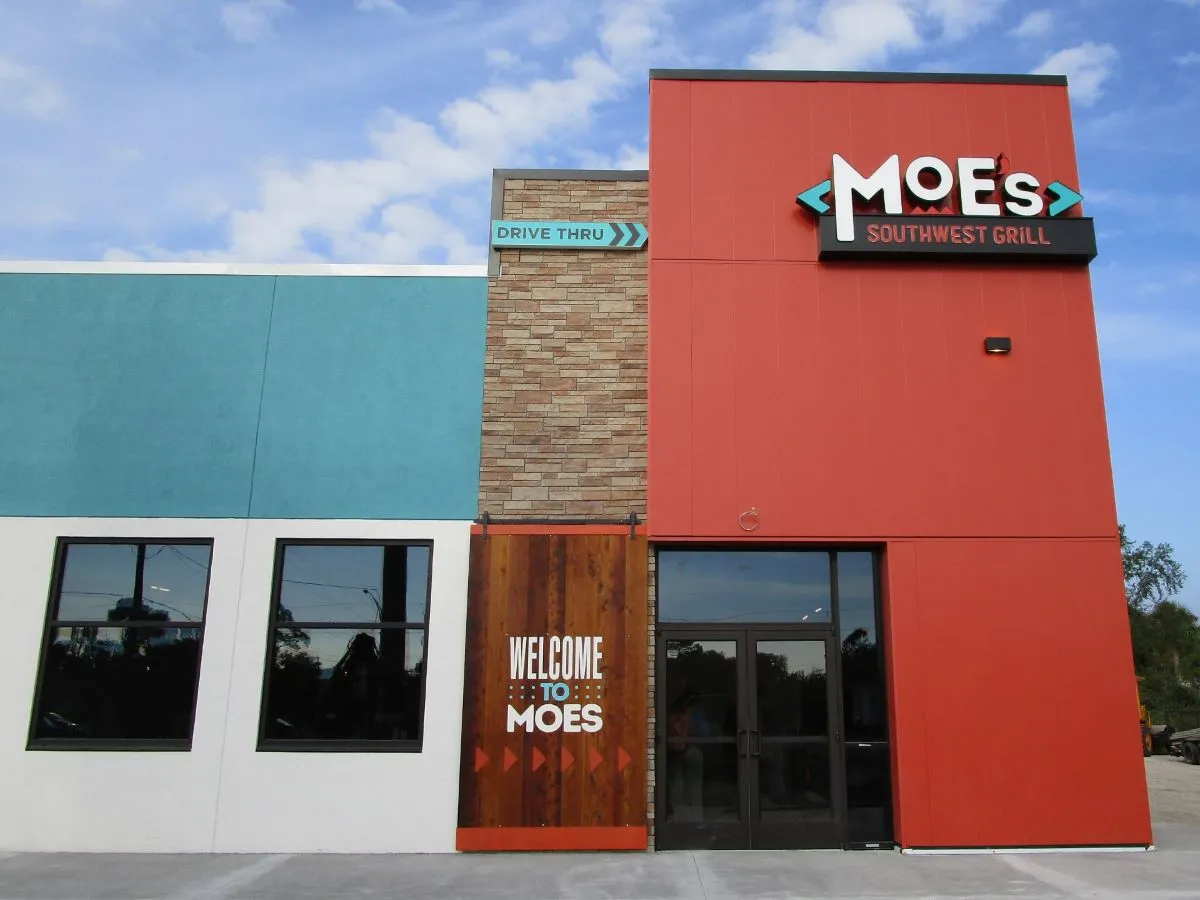
Have Moe’s new store prototypes and ovens driven any meaningful labor savings?
As far as labor savings go, I don't know if we can quantify that yet. I can tell you that we've done time and motion studies on two things. We’ve seen about 20% more idle time. We define idle time as people not actively engaging in duties that would include production. There's an opportunity to redeploy that 20%. As part of Project Victory, we've identified an opportunity to make some more things in-house. Instead of paying for production of something that costs more, and may or may not have the same level of quality, there's the ability for us to ideate items that we can produce in-house by leveraging some of that idle time. This saves some food costs, and also creates a fresher, better product.
For example, we buy steak that is pre-cut, and we cook that steak. We’re going to start buying a whole muscle and test cutting the whole muscle. The brand originally started out doing that, but for whatever reason moved away from the practice — my understanding is because there is a lot of labor involved in that process. We’re finding that we can redeploy labor so we can potentially bring in a better product for a guest and still not spend any more money on labor.
Zooming out a bit and looking at future growth, what markets are you targeting with Moe’s smaller store prototype?
Our target markets are largely in the Midwest. If you look at our portfolio from Florida to New York, it's peppered pretty well — there's definitely opportunities to grow in those markets. It's important that we understand cannibalization as we open up in the current markets and there's so much green space out there for us. If you look at some of these other markets, like in the Midwest, real estate is a little bit more attainable. Labor can be a little bit cheaper. Competition is a little bit different. I'm pretty bullish that we can continue to fill in the East Coast, but there's a huge opportunity for us to plant some seeds and grow between the Midwest and Colorado.
Our strategy has largely been making sure we're picking the right franchisees, making sure that we can support them from distribution, making sure that there's a plan for brand recognition, etc. Our non-traditional locations — for example, airports, military bases, schools — outperform what I've seen in other brands. As we get opportunities to open up in airports and other outposts, that plants a flag that is able to get us some brand recognition, and it also allows us to establish the distribution that we need. Then from there, we can open up traditional locations — it just really helps us enter those markets.
What influence do your franchisees have in the changes being made at Moe’s?
We've had so much of a legacy of franchisees that have had great ideas. I would just give credit to my team for listening and being able to consolidate and test things and fail fast. One of the things that we did is we removed black olives, and we got some major pushback from franchisees and guests. So we said, “Hey, you know what, this isn't worth testing. There's too much risk with removing them.” So I want to give credit to our franchise system for all these things and the things that are working.









